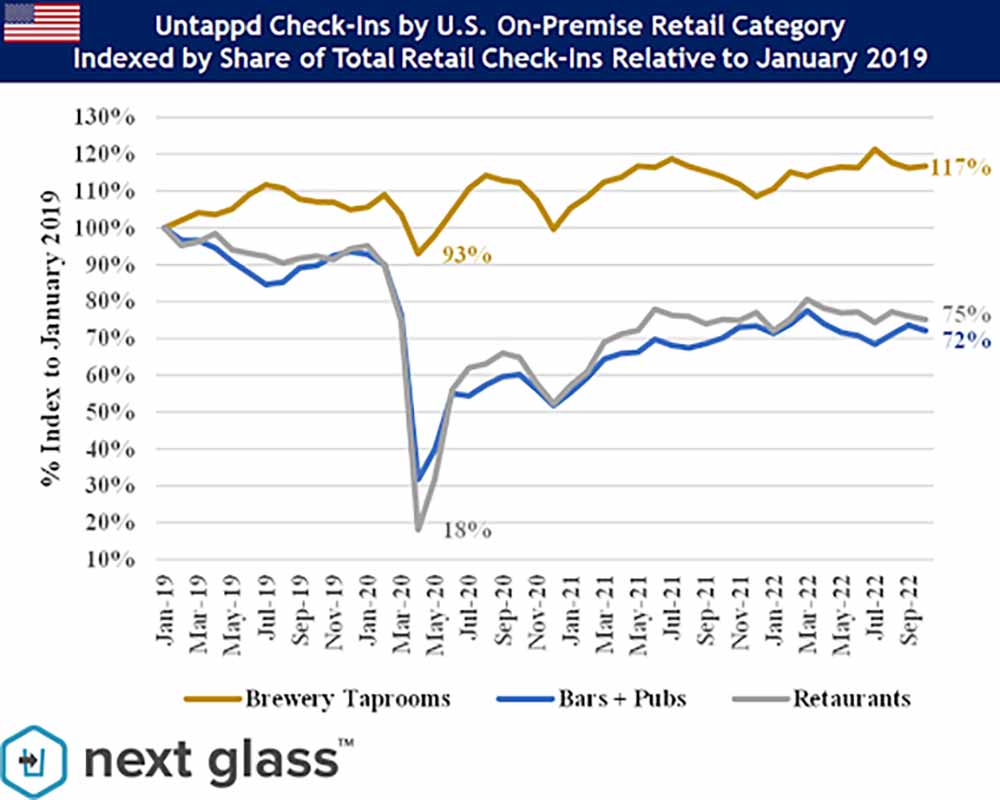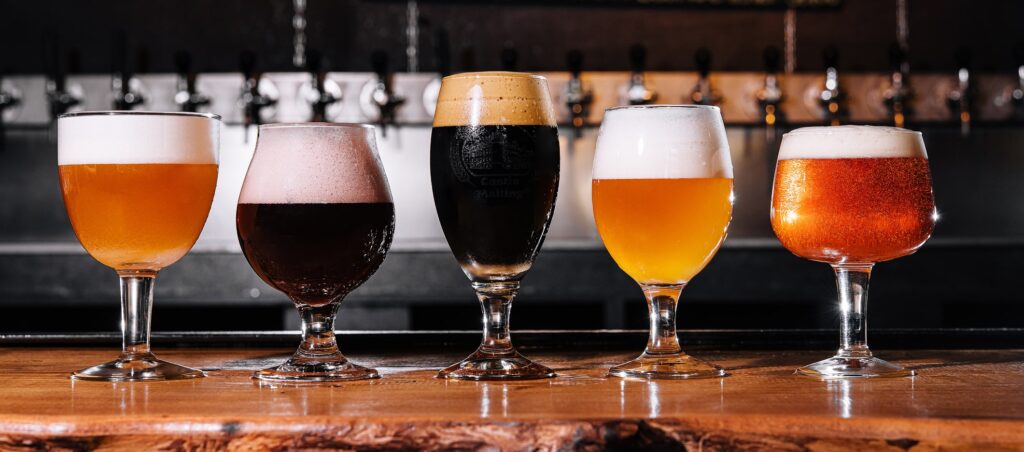This past July, the oldest craft brewery in the U.S. announced it will be closing its doors as a result of continually declining sales. This stirs several contemplations for surviving breweries: How can craft brewers navigate this rocky landscape amongst shifting consumer preferences? How can they stay competitive in a heavily saturated beverage market?
While Mid-Year craft data estimates that craft beer volume was down -2% the first half of 2023, it still shows optimism on the horizon.
“Collectively, craft still needs new ideas and new strategies to move beyond our current normal, which is a slow-growth environment,” shares Bart Watson, Chief Economist at the Brewers Association. “Craft beer demand isn’t going anywhere, and there is plenty of opportunity for growth within new channels, occasions, and customers.”
With this in mind, Pinion business advisors offer three strategies to help craft breweries navigate industry instability:
- Diversify your revenue streams.

Figure 1. Brewery taprooms remained resilient through the pandemic and continues to take shares from the Bars + Pubs and Restaurants. Graphic from Hopculture.com
While beer production may remain your central focus, consider expanding into complementary services or products. Look at your current assets and equipment; there may be a way to leverage what you have with minimal investment.
This may manifest as using your space to host food and beer pairing events or themed dinners, connecting with local bars, restaurants, and liquor stores for unique collaborations, or hosting brewery tours and educational workshops. Though it would require more investment, some breweries cross into distillery and even bottling and canning services.
The graph shown above illustrates the resilience of brewery taprooms as a preferred destination, both during and after the pandemic.
- Capitalize on consumer trends.
To stay competitive in a saturated market, craft brewers need to keep close tabs on consumer trends and pivot quickly. Product innovation takes time but should be a priority for any food and beverage company. Consider testing and learning with small batches in a local market.
“Fail fast and let your learnings inform your innovation pipeline,” says Becca Simmonds, Pinion F&B business advisor. “Creativity is essential to survival for any industry, but especially the craft beer industry.”
Trends to watch include a rise in taprooms (Figure 1), ready to drink beers and beyond beer variations including non-alcoholic beer and hop water. The Drizly BevAlc trend report shows a lager comeback, reporting that among the highest spending households, lager was the top beer choice at 38%.
Success is never guaranteed with product innovation, but consistently seeking feedback from your fans, collaborating with customers and speed to market are three keys to navigating an ever-changing industry.
- Focus on gross margins.
In years past, brewers aimed for rapid expansion, prioritizing topline revenue at all costs. However, they are now recognizing the benefits of product optimization through a focus on cost inputs. This means being relentless about achieving better-than average gross margins. We typically see an average profit margin of 20%, so aim for 25%. Many start-up founders assume their gross margins will increase with volume as they grow, but this is usually not the case, so plan accordingly.
Diving into your cost inputs is the best way to achieve desirable gross margins. Assess and reassess supplier contracts, seek out ways to improve efficiency and discontinue underperforming or margin decretive products.

Navigate the Instability
The craft brewery industry is facing challenges across the board, from elevated interest rates to declining consumer consumption. You can navigate this instability by broadening your revenue sources and establishing a strategic product innovation pipeline. Success will hinge on your ability to stay diligent in protecting your gross margins while pursuing innovation.
Pinion advisors help beverage manufacturers scale and optimize operations for long-term financial security. Connect with an advisor to see how they can help navigate industry challenges and mitigate risk.










